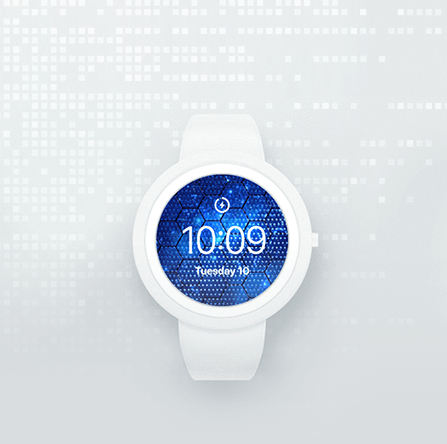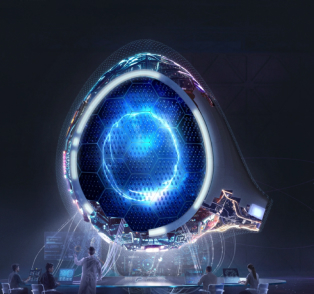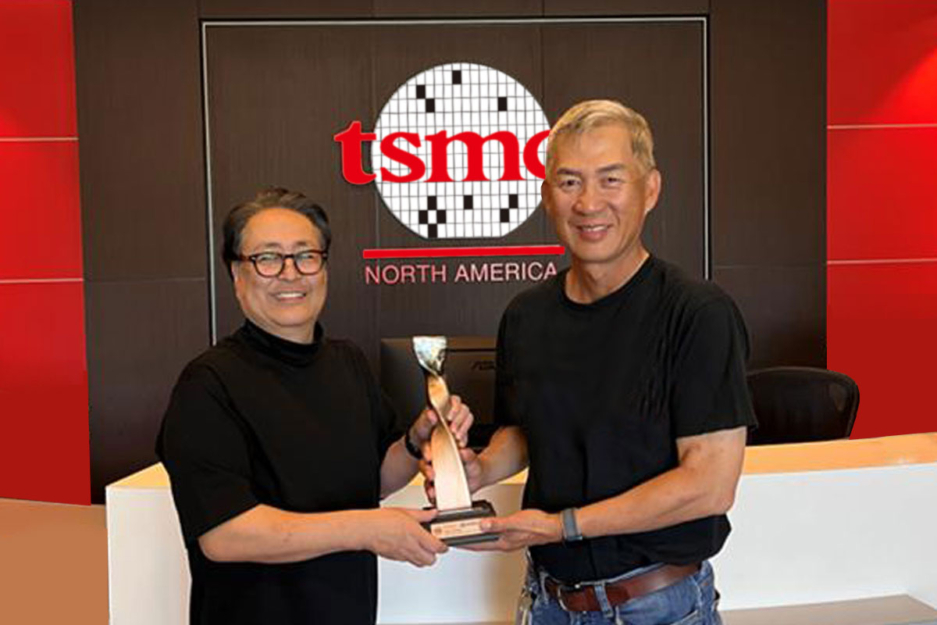
Ken Mattingly was moved through the help crew into parallel education with Anders as backup CMP in the event Apollo 11 was delayed past its supposed July start day, at which position Anders can be unavailable.[59]
RTC 01 The Ambiq® genuine-time clock could be the business leader in ability management, operating as an incredibly minimal electric power "keep-alive" supply for that system and bypassing the need for the principle MCU to ability down the gadget to conserve electric power.
Singapore is uniquely positioned to Engage in a significant function in driving ongoing advancement inside the ASEAN area. As Ambiq diversifies and expands its businesses around the globe, its determination and investment decision in Singapore are important in guaranteeing future accomplishment.
With a membership-free of charge encounter, the Luna Ring Application delivers tailor-created insights into daily exercise functionality. The engineering marvel is constructed to be certain precision with constructed-in algorithms for Increased health tracking.
In addition, it demonstrated the S-IVB third stage's very first in-flight restart. The mission applied a Block I command and repair module modified to check a number of crucial Block II revisions, like its warmth protect at simulated lunar-return velocity and angle.
In the meantime, on May 24, engineers on the North American plant observed hairline cracks in propellant tank welds of Yet another S-II phase. The following day, personnel in the VAB began the next destack on the rocket, taking away the S-II stage on June three for in-depth inspections. Extensive X-ray and dye penetrant exams unveiled no cracks, and staff commenced re-assembling the rocket on June eighteen. Engineers during the MSOB finished the wiring function in CM-017, reassembled it with its other elements, and returned it for the VAB where by floor crews stacked the spacecraft for the ultimate time on June twenty. The stacking, unstacking, and restacking process had taken 8 months.
The computer software's motion, in this case, was to eradicate decreased priority tasks and re-set up the greater essential types. The pc, rather then Nearly forcing an abort, prevented an abort. If the pc hadn't regarded this issue and taken recovery action, I question if Apollo eleven would've been the successful Moon landing it was.[one hundred twenty]
The need for that Sunlight angle was specially restrictive, limiting the launch day to someday each month.[eighty three] A landing just after dawn was decided on to Restrict the temperature extremes the astronauts would experience.
On May well 24 it absolutely was declared which the S-II could well be eradicated for inspection next the invention of hairline cracks in A further S-II then being constructed, this function becoming finished by mid-June, after which the CSM was also returned towards the stack, the first time the launch vehicle and spacecraft had been fully assembled. It absolutely was rolled out to LC-39 on August 26, 1967,[fourteen] wherever it absolutely was joined because of the Cellular Servicing Construction that allowed access to the launch auto and spacecraft two times later on, also transported by crawler.[18] This was the first time a NASA spacecraft were assembled clear of its launch website, some thing permitting security from Florida's warm and humid weather for products and personnel.[19]
Aldrin's bootprint; Element of an experiment to test the Homes of your lunar regolith They deployed the EASEP, which integrated a passive seismic experiment bundle utilized to measure moonquakes along with a retroreflector array employed for the lunar laser ranging experiment.[157] Then Armstrong walked 196 toes (sixty m) in the LM to just take photos at the rim of Tiny West Crater even though Aldrin gathered two Main samples. He utilized the geologist's hammer to pound inside the tubes—the one time the hammer was employed on Apollo eleven—but was not able to penetrate much more than six inches (fifteen cm) deep.
When it arrives time to established Eagle down in the Sea of Tranquility, Armstrong improvises, manually piloting the ship previous an area affected by boulders. Through the remaining seconds of descent, Eagle’s Laptop is sounding alarms.
[one hundred ten] Mission controllers experienced planned to send out apollo 4 plus Apollo 12's S-IVB into solar orbit after separation from your Apollo spacecraft, but it's believed the burn off lasted too extended, and as a result did not ship it shut sufficient on the Moon, so it remained in a barely steady orbit within the Earth and Moon. In 1971, through a series of gravitational perturbations, it can be considered to possess entered in the photo voltaic orbit and then returned into weakly captured Earth orbit 31 a long time afterwards. It remaining Earth orbit again in June 2003.[111] See also[edit]
Armstrong then jumped on to the ladder's third rung, and climbed into your LM. Soon after transferring to LM lifestyle aid, the explorers lightened the ascent stage for the return to lunar orbit by tossing out their PLSS backpacks, lunar overshoes, an empty Hasselblad digicam, and also other gear. The hatch was shut again at 05:eleven:thirteen. They then pressurized the LM and settled right down to slumber.[163]
For decades, Aldrin believed the final choice was largely driven by the lunar module's hatch location. Because the astronauts experienced their spacesuits on and the spacecraft was so small, maneuvering to exit the spacecraft was difficult. The crew tried using a simulation wherein Aldrin remaining the spacecraft initially, but he harmed the simulator when aiming to egress.

Get Smart. Use Less Energy.
Ultra-low power SoCs for IoT endpoint devices
that demand complex operations
and longer battery life.
✍ Ambiq® is committed to further improve the quality of life apollo 4 plus by enabling the intelligence of endpoints while further reducing carbon footprints. Ambiq – your partner in endpoint intelligence.
✯✯✯Based in Austin, San Jose, Hsinchu, Shenzhen, and Shanghai, our leadership and management teams consist of advocates, builders, enthusiasts, entrepreneurs, explorers, incubators, inventors, pioneers, protectors, thinkers, and visionaries. With a diverse spectrum of experiences and skillset, we came together and united with one goal to enable the true Internet of Things where the battery-powered endpoint devices can truly be connected intuitively and intelligently 24/7.
Ambiq Wins the Demo of the Year Award at 2023 TSMC Technology Symposium
September 7, 2023, Austin, TX – Ambiq®, a leading developer of ultra-low-power semiconductor solutions that deliver a multifold increase in energy efficiency, was awarded the Demo of the Year Award by TSMC as a participant of the Innovation Zone at the 2023 TSMC North America Technology Symposium.
Ambiq Wins the Demo of the Year Award at 2023 TSMC Technology Symposium
During the April event, Ambiq showcased various product design wins using TSMC’s 22nm technology in wearables, digital health, smart home, Industrial IoT, pet trackers, and retail segments, with industry-leading energy efficiency. Ambiq also featured two live demos emphasizing its leadership in enabling endpoint AI with its HeartKit™ for remote patient monitoring and its graphics display capabilities for a vivid user interface.

TSMC pioneered the pure-play semiconductor foundry business model when it was founded in 1987, helping startup companies accelerate their innovations by providing access to the industry’s leading process technologies and manufacturing capacity. Since 2021, TSMC has expanded that mission with an Innovation Zone at its worldwide Technology Symposiums, highlighting how TSMC partners with startup companies to enable cutting-edge products from various applications, including high-performance computing, communication, automotive, IoT, and consumer segments.
“We’re grateful to TSMC and our booth visitors for allowing us to share our energy-efficient technology and processor solutions with them,” said Ambiq’s CEO, Fumihide Esaka. “We’re moving towards an exciting frontier of AI becoming more engrained with our daily lives. With that vision on the horizon, we will continue to develop innovative and first-of-its-kind ultra-low-powered solutions that keep innovation and sustainability in mind.

Ambiq’s mission is to develop the lowest-power semiconductor solutions to enable intelligent devices everywhere by developing the lowest-power semiconductor solutions to drive a more energy-efficient, sustainable, and data-driven world. Ambiq has helped leading manufacturers worldwide develop products that last weeks on a single charge (rather than days), while delivering a maximum feature set in compact industrial designs. Ambiq’s goal is to take Artificial Intelligence (AI) where it has never gone before in mobile and portable devices, using Ambiq’s advanced ultra-low power system on chip (SoC) solutions. Ambiq has shipped more than 200 million units as of March 2023.
Ambiq Designs Low-Power for Next Gen Endpoint Devices
Ambiq’s VP of Architecture and Product Planning, Dan Cermak, joins the ipXchange team at CES to discuss how manufacturers can improve their products with ultra-low power. As technology becomes more sophisticated, energy consumption continues to grow. Here Dan outlines how Ambiq stays ahead of the curve by planning for energy requirements 5 years in advance.
Facebook | Linkedin | Twitter | YouTube